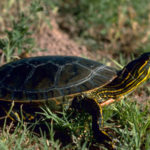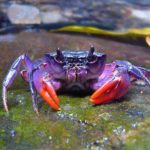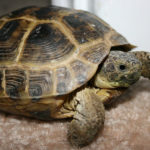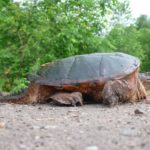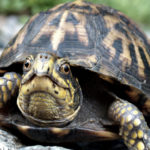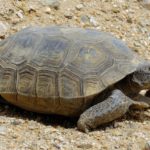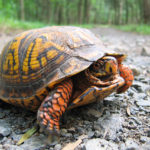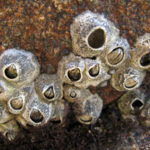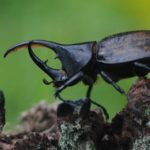Tortoises – information
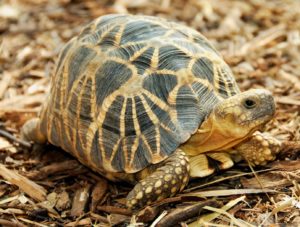 The torso of the turtles is enclosed in a shell, which partly protects the head, neck and limbs. Its upper part, or carapace, covers the back and sides of the reptile, the lower one, or the plastron, is the abdomen. The shell is so strong that it can withstand a weight 200 times the weight of the wearer.
The torso of the turtles is enclosed in a shell, which partly protects the head, neck and limbs. Its upper part, or carapace, covers the back and sides of the reptile, the lower one, or the plastron, is the abdomen. The shell is so strong that it can withstand a weight 200 times the weight of the wearer.
Usually the inner layer of the carapace is bony, and the outer layer is formed by a rigid horny tissue. Both layers consist of a set of tightly fitted elements. Bony elements are called plates, and horny elements are called scutes. The strength of the shell is partly due to the fact that the boundaries between the inner plates and the outer shields do not coincide.
As the size of the turtle increases, a horny substance grows along the edges of each flap. If growth is interrupted by periods of hibernation, the annual rings on the scaffolds are clearly distinguishable, allowing one to estimate the age of the individual.
Ribs are fused with the shell, so the chest is immovable. As a result, the breathing of the turtle resembles the diaphragmatic, which is characteristic of man and other mammals. Special muscles pull the internal organs back, allowing the lungs to fill with air; Then the other muscles perform the reverse process, compressing the lungs. Some aquatic species do not completely depend on pulmonary respiration and are able to absorb oxygen also through the mucous membrane of the pharynx.
Differences between males and females (sexual dimorphism) are expressed differently depending on the species; Sometimes they are completely invisible. Comparison of males and females of other species shows that the first tail is longer and thicker, and the anus is located farther from its base. This dimorphism is especially well expressed in huge sea turtles. Other sex differences are related to the shape of the plastron, the color and size of the head, and also the overall dimensions of the body.
The period of incubation and hatching is the most dangerous in life turtles; At this time, numerous enemies are tasting their delicious eggs and still soft-bodied cubs. Mammals dig out the masonry, and seabirds grab the newly hatched turtles, when they rush along the shore to the water. Once in the water, the kids become prey to gluttonous fish. At this time, the breeding grounds of turtles usually accumulate a large number of lovers of their eggs and calves. Depending on the type for the hardening of the shell requires a different time, but, as a rule, at least several months. After that, the turtles become relatively inaccessible to predators.
In nature, turtles grow quickly. An example is known when, even in captivity, the Galapagos elephant turtles (Geochelone elephantopus), starting at about 11 kg, added as much each year until they began to weigh more than 100 kg. Sexual maturity, many small species reach at the age of 2 to 11 years.

